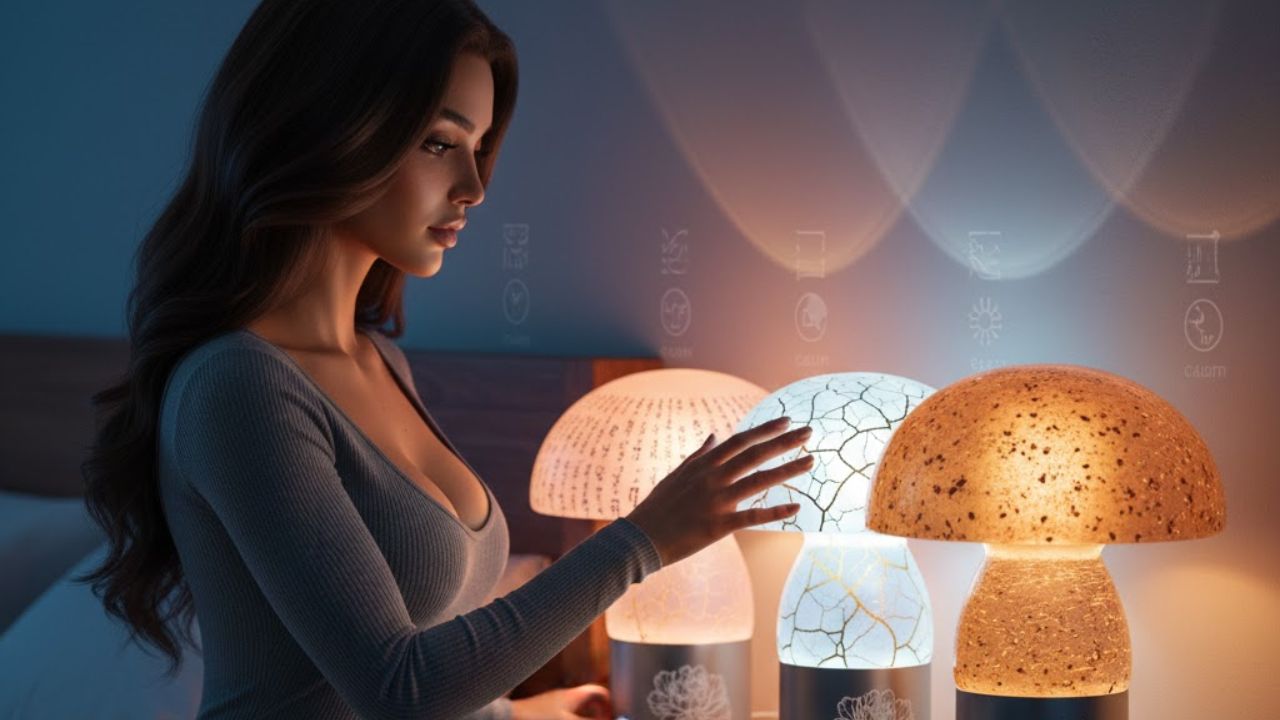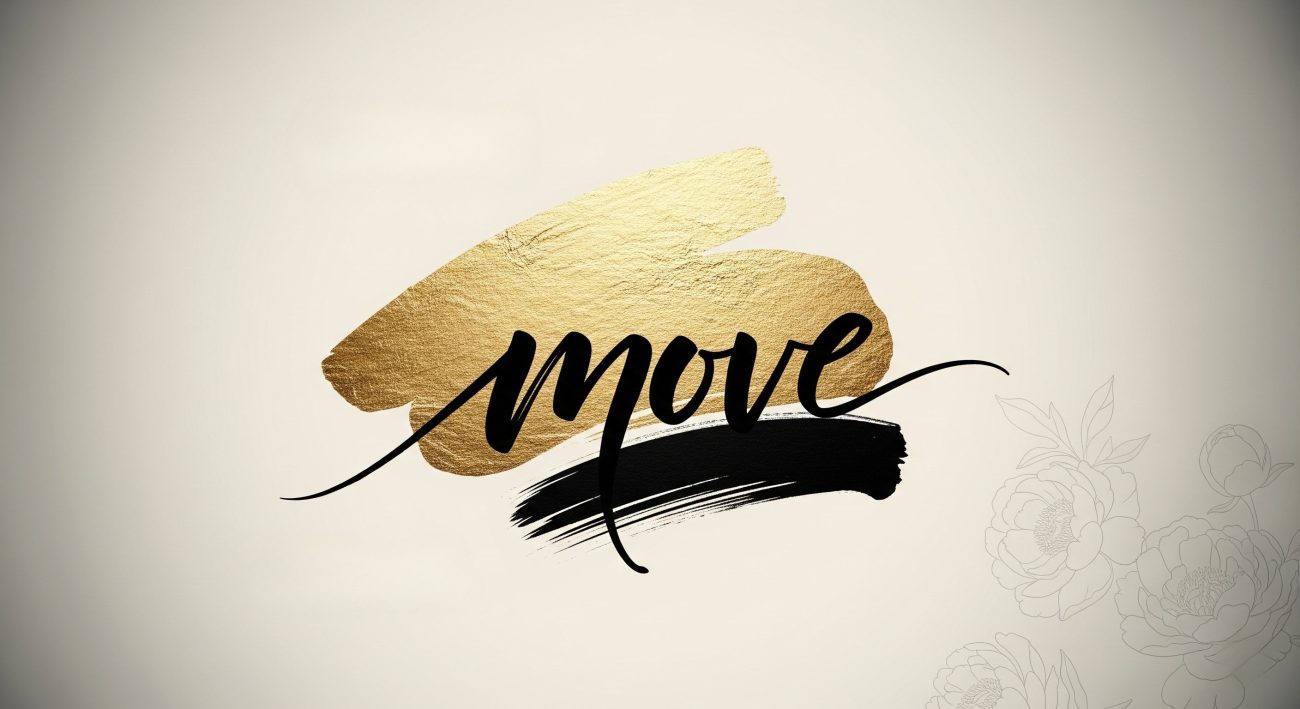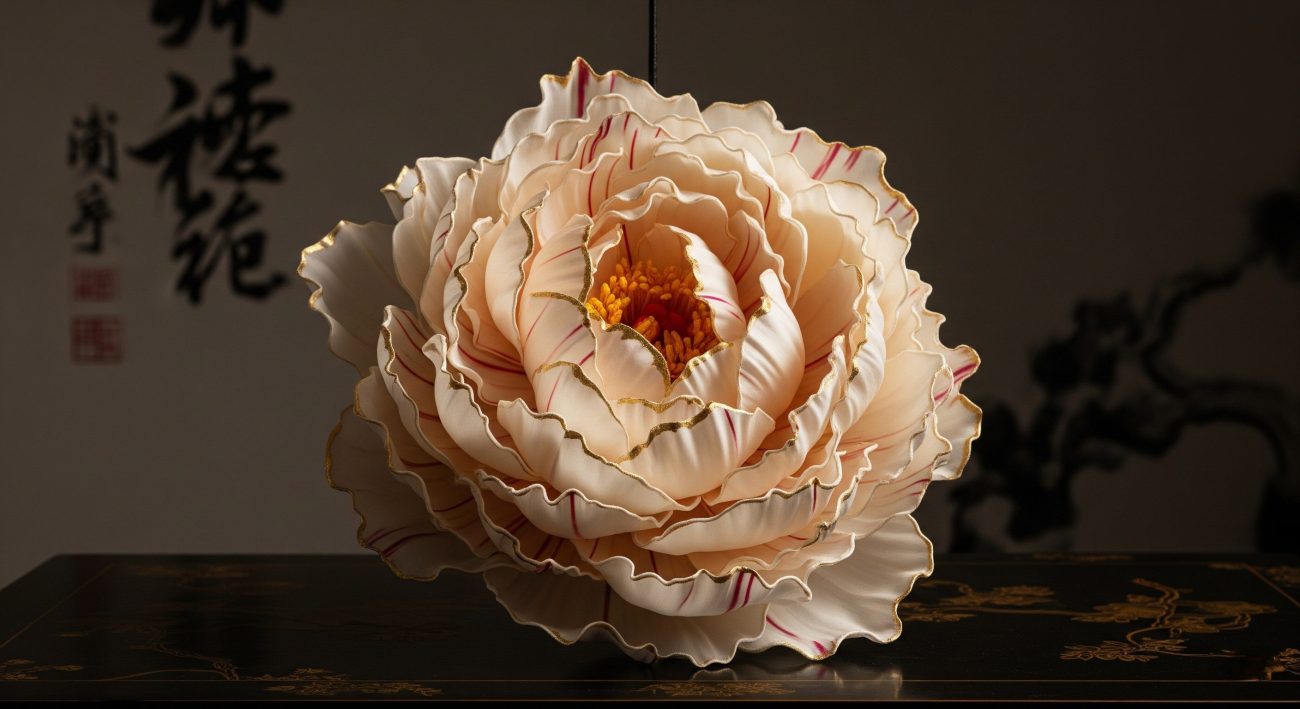The Resonance Code: Why ‘Better Design’ Is Costing You Clients (And the New Logic for Building Unshakeable Brand Trust)
I’ve spent several years in the trenches of psychology for identifying the shift from the “Attention Economy” to the “Resonance Economy.”
Attention is cheap. It’s a click, a “like,” a 3-second view. It’s a drug, and brands are overdosing on it, constantly chasing a high that never lasts. You get a million views, but your revenue doesn’t budge. Why? Because attention, without trust, is worthless.
Resonance is different. Resonance is a vibration. It’s when a customer sees your brand, your product, your image, and a signal travels from their eyes, through their logical brain, and strikes a chord deep in their chest. It’s a feeling of, “They get it. They get me.”
Resonance is not just emotion; it is the synthesis of logic and magic. And in my analysis of the most commercially successful brand assets, from viral campaigns to billion-dollar product launches, I’ve found they all follow this one “Resonance Code.”
The problem is, 99% of design portfolios, 99% of agency pitches, and 99% of brand campaigns are still stuck in the “Attention” era. They are showing “good, logical design.” They are showing “pretty pictures.”
And this is costing you everything.
Your “good” design is invisible. It’s competent, it’s clean, it’s professional, and it is utterly forgettable. It doesn’t resonate, so it doesn’t build trust. And without trust, you get no confidence. Without confidence, you get no sale.
The Anatomy of Resonance (The Code)
You’re a brand manager, a CMO, or a founder. You have a “brand identity” document. It has your logos, your colors, your “mission.” This is your Logic. It’s essential. It is the “what.”
But your competitor has one, too.
What you’re missing is the Magic. The magic is the “Wu” in DesignWu. It’s the deep, rhythmic, surrealist hook that stops the mind and starts the heart.
The Resonance Code is a three-part fusion:
- Brand DNA (The Logic): The unimpeachable, historical truth of the brand. Its heritage, its core promises, its “must-haves.”
- The “Surrealist What-If” (The Magic): A single, powerful, impossible question that pushes the brand DNA into a new, emotional territory.
- The Artifact (The Proof): The final, hyper-detailed asset. The proof that the logic and magic can co-exist. This is the image, the product, the campaign that you show, not tell.
Most brands are too scared to ask the “What-If?” They live in Logic-land. But the most successful brands—the ones with cult-like followings—live at the intersection.
Let me show you.
We will deconstruct this method using three of the most powerful brand DNAs in the world: Chanel, Louis Vuitton, and Dior. These are not “mockups”; they are theses. They are the results of a process designed to build unshakeable confidence.
Case Study — Chanel (The Calligraphy of Defiance)

AI fashion design product heros image building unshakeable brand trust chanel
1. The Brand DNA (The Logic):
- Chanel is: Rebellious, defiant elegance.
- The DNA is: The little black dress, the camellia flower, the tweed suit, the sharp monochrome.
- The Feeling is: Austere, confident, timeless, powerful.
2. The “Surrealist What-If” (The Magic):
- The logical approach is to just make a nicer tweed suit. That’s what “good design” does.
- The Resonance approach asks: What if the suit wasn’t fabric? What if Chanel’s rebellious spirit was so powerful, it could be written into existence?
- The What-If: What if a Chanel suit was a 3D construct of frozen, calligraphed ink, a physical manifestation of Coco’s defiant signature?
3. The Artifact (The Proof):
Analysis: Look at this image. Your logical brain sees “Chanel.” It recognizes the box-cut, the silhouette, the power.
But your emotional brain is captivated. This is not tweed. This is “Wu Style” and “Cn Rhythmic” energy—it’s the flow of a master’s brush, given solid form. It feels ancient and futuristic at the same time. The “fabric” is made of defiance itself. The surrealist hook—the shattering glass camellia—captures the brand’s beautiful, dangerous fragility.
How a Client Feels: When a potential customer sees this, they don’t think, “That’s a nice design.” They think, “This designer understands Chanel on a cellular level. They have the technical skill to invent a new reality.”
That is Trust. That is Confidence.
Case Study — Louis Vuitton (The Kintsugi of Travel)
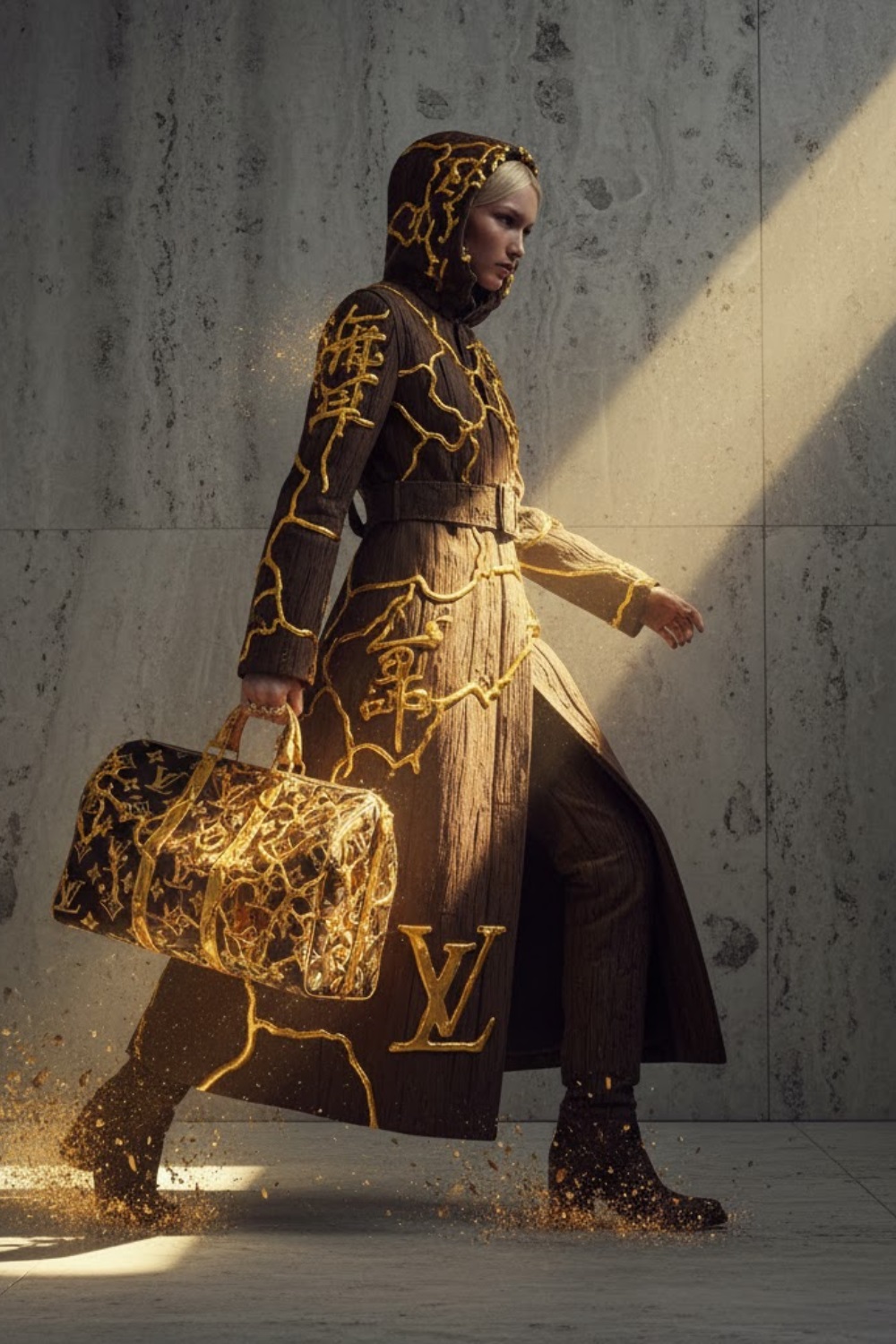
AI fashion design product conception LV heros image building unshakeable brand trust
1. The Brand DNA (The Logic):
- Louis Vuitton is: The art of travel.
- The DNA is: The monogram, the trunk, the “Keepall,” heritage, craft, and (more recently) hype-culture.
- The Feeling is: Luxurious, durable, adventurous, aspirational.
2. The “Surrealist What-If” (The Magic):
- “Good design” would put the monogram on another bag.
- The Resonance approach asks: How do you show “heritage” and “future” at the same time? How do you show “durability” in a way that is also beautiful?
- The What-If: What if the LV brand was an ancient, futuristic artifact, “broken” by its travels and repaired with molten gold—a form of Kintsugi that celebrates its journey?
3. The Artifact (The Proof):
Analysis: The logic is all there: the iconic “LV” brown, the hint of the monogram, the “travel-wear” silhouette of the coat.
But the magic is overwhelming. The coat isn’t made of anything you can buy. It’s made of “petrified wood,” a material that says “ancient” and “unbreakable.” The “Wu Style” cracks are not damage; they are the story. They are the brand’s history, illuminated with 24k gold. The “Cn Rhythmic” particles trailing off the model are not just a visual effect; they are the energy of a brand in constant, powerful motion.
How a Client Feels: A potential LV client (or any client) sees this and understands: “This designer doesn’t just decorate. They build narratives. They can take our history—our ‘baggage’—and turn it into a golden, powerful asset. They can make us look mythic.”
That is Trust. That is Confidence.
Case Study — Dior (The Spectral Bloom)
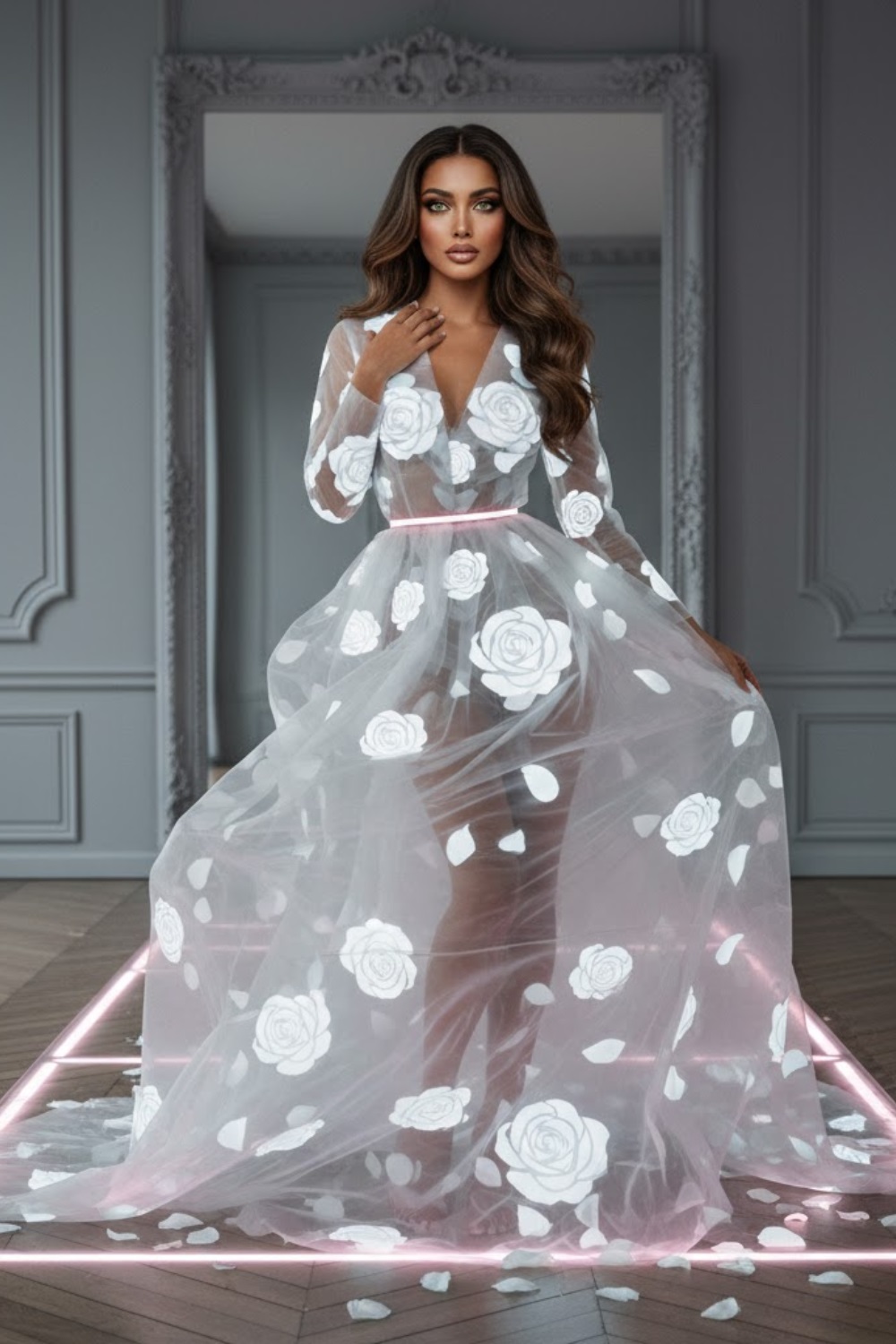
AI fashion design product conception Dior heros image building unshakeable brand trust
1. The Brand DNA (The Logic):
- Dior is: Hyper-feminine, romantic, dreamlike.
- The DNA is: The “New Look” silhouette, the full skirt, the cinched waist, the love for flowers (especially roses).
- The Feeling is: Ethereal, elegant, graceful, aspirational.
2. The “Surrealist What-If” (The Magic):
- “Good design” would be another floral-print dress.
- The Resonance approach asks: What is the essence of the Dior dream? It’s not the dress; it’s the feeling the dress gives you.
- The What-If: What if the Dior “New Look” wasn’t a physical garment, but a memory? A beautiful, spectral dream made of light, mist, and the ‘ghost’ of a thousand roses?
3. The Artifact (The Proof):
Analysis: This is the Resonance Code at its most emotional. The logic is perfect: the “New Look” silhouette is unmistakable. But the garment itself is pure surrealism.
It’s not fabric. It’s “solidified smoke.” It’s “captured light.” The “Cn Rhythmic” elements are the glowing petals, not stitched on, but breaking away from the garment as if it’s a living, breathing entity. The minimalist, brutalist room (the Logic) contrasts with the impossible, romantic gown (the Magic), making the gown feel even more precious. The mirror that doesn’t reflect the model? That’s the ultimate surrealist hook. This is a dress that exists in a dream, not in reality.
How a Client Feels: A client sees this and knows: “This designer understands longing. They understand that we aren’t selling clothes; we are selling a dream. They have the logic to honor our heritage and the magic to make it haunt the imagination.”
That is Trust. That is Confidence.
Conclusion: Your Brand Is Not a Logo. It’s a Resonance.
You have now seen the code. You have seen the proof.
The work on my portfolio, www.designwu.com/portfolio, is not a collection of “pretty pictures.” It is a laboratory of results. It is a series of strategic assets, each one engineered to build unshakeable trust by fusing unassailable logic with unforgettable magic.
This is the new world. The “Resonance Economy” will be led by brands, and by designers, who are brave enough to do more than just “good design.”
“Good design” is a commodity. “Good design” is what you do when you’re afraid to be great.
“Resonant design” is a moat. It’s a competitive advantage. It’s what you do when you are ready to be the only choice.
Your brand is a story. My job is to find the one, impossible, logical, and magical “What If?” that will make the world stop, listen, and feel that story.
Are you ready to stop competing on “good” and start winning on “resonance”?
If you are, you know where to find me. The case studies are waiting.
Conversational AI Design for Jennifer Lopez Inspired Wellness Art


